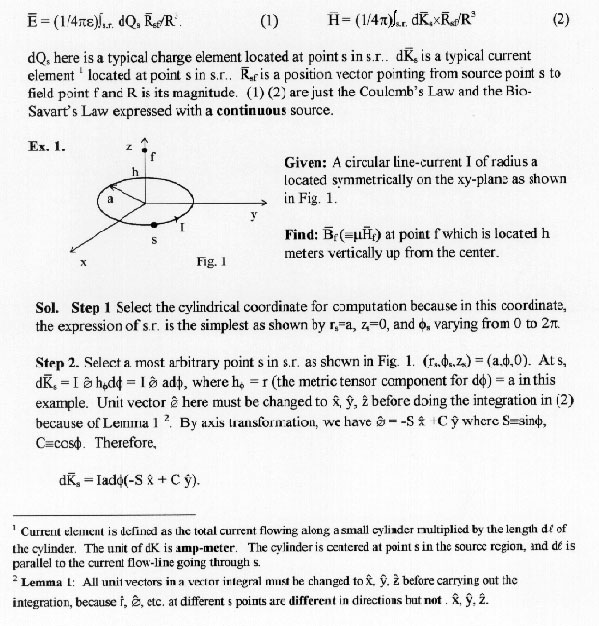
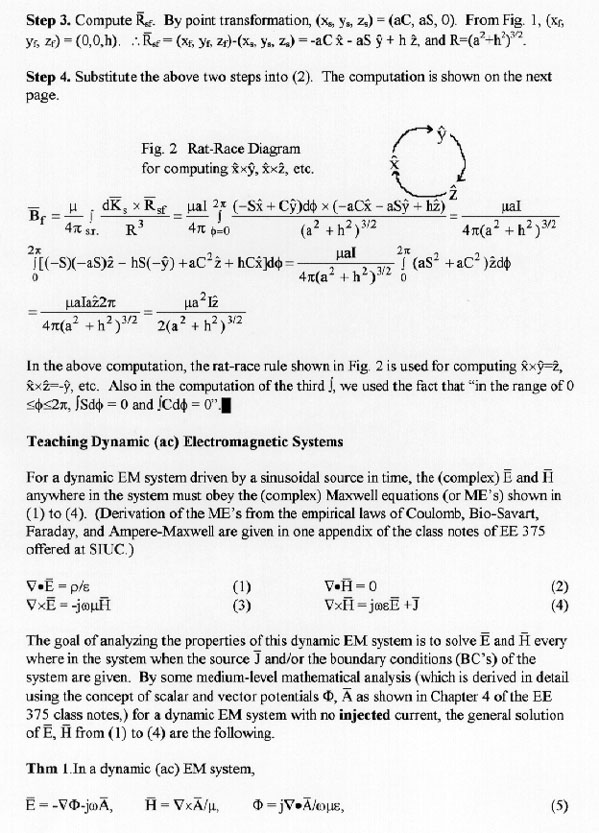
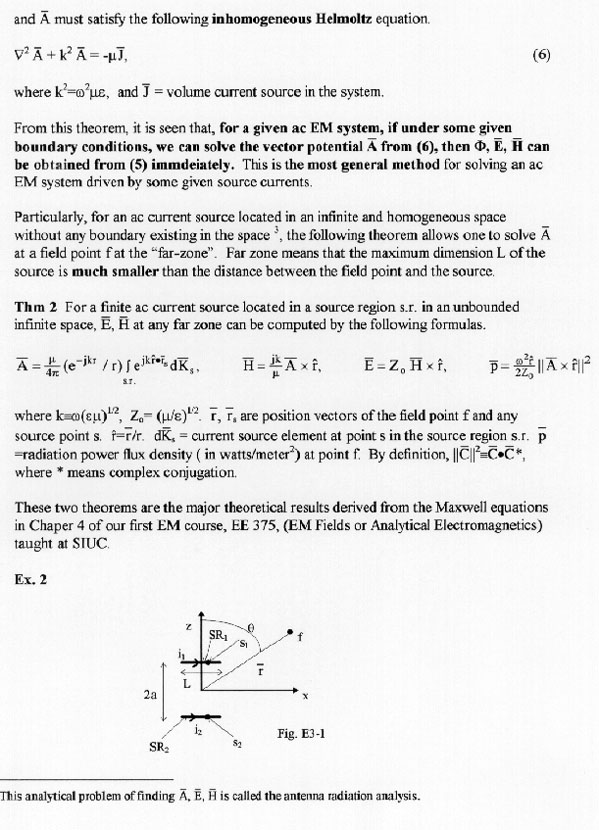
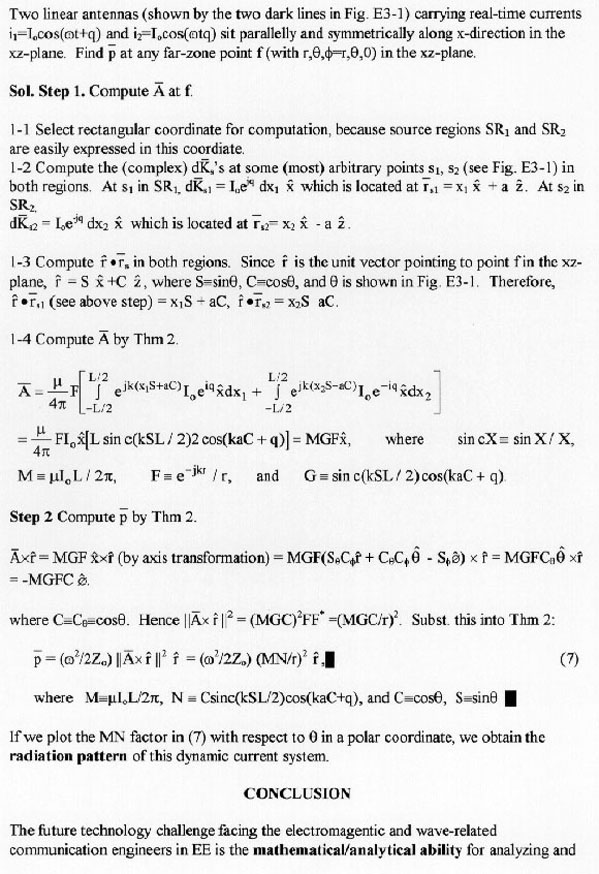
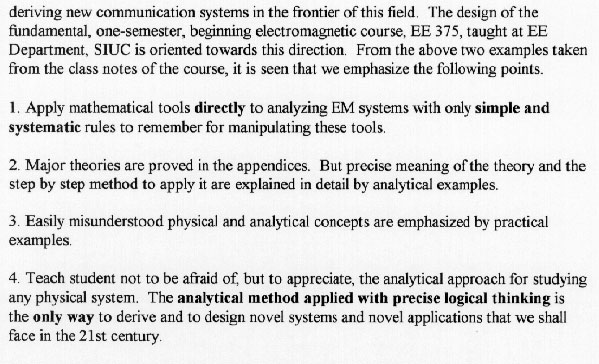
ABSTRACT
Modern eletrical engineering technologies can be approximately divided into two categories: analog system technology and digital system technology. A major part of the analog systems deals with the electromagnetic communication systems such as RF systems, microwave systems, mm and sub-mm wave systems, and optical wave systems. To analyze and to design these systems requires a medium level analytical background. Unfortunately, many of the current high school graduates and college freshmen, sophomores in our nation are not well trained with adequate mathematics that allows them to directly apply to analyze or to understand the physical properties of these systems.
The beginning EM (or electromagnetic) course, EE 375, Analytical Electromagnetics, taught at SIUC, is designed to correct this deficiency and to meet the following two challenges.
1. Teach the 3rd year EE students (generally, the first year EM students), who have poor calculus backgrounds, the analytical tool in a practical way that allows them to directly analyze the properties of a physical system, particularly, an EM system.
2. Teach these students to analyze dynamic(or ac) EM wave systems, such as radiating systems, optical wave systems, and wave-guiding systems in the first semester in their EM-course .
The materials covered in this one-semester, beginning jounior-level course not only allow the students to understand the basic (dynamic) EM systems currently used in the industry, but also allow them to apply the analytical techniques they learned to analyze many advanced wave related systems we used today.
Material selections and method of presentations we used in this course will be explained through two teaching examples as shown in the following two sections.
INTRODUCTION
Teaching Static (or dc) Electromagnetic Systems
For a discrete circuit system with all elements given, if we can solve the system variables V, I every where in the circuit, then we know all the properties of this circuit. Similarly, for an EM system with sources and boundary conditions given, if we can solve the system variables , everywhere in the system, then all properties of this EM system can be obtained. For a dc (or static) EM system, we using the following formulas to calculate , at a field point f when the continuous charge or the continuous current is given in the source region (s.r.).




